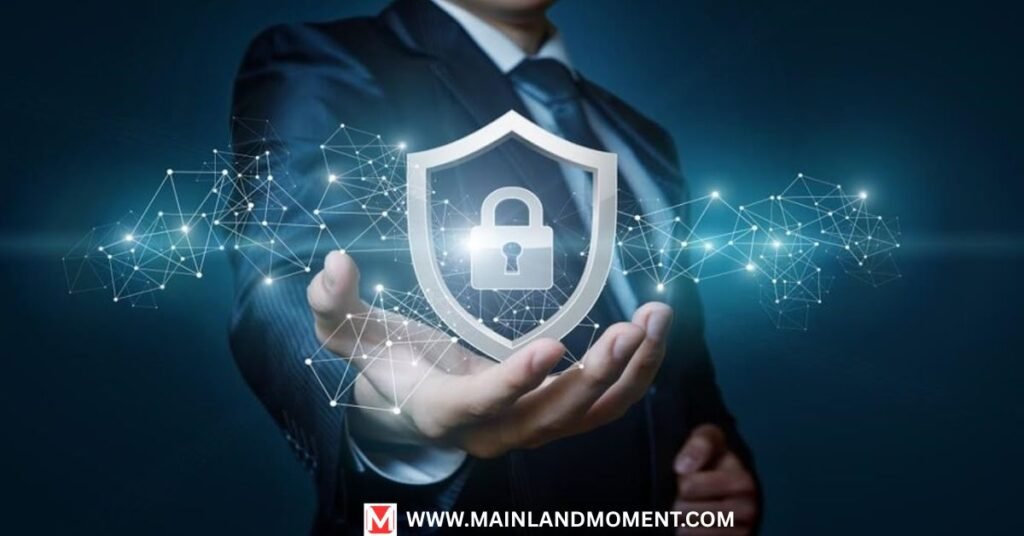In the year 2024 alone, data breaches cost more than $4.8 billion in losses due to cybercrime, which has stratospherically increased. Your email, banking, and social media accounts are most attractive to cybercriminals, and securing them from potential attacks makes the smartest and most logical thing someone can do-an absolute must to do.
This guide goes into depth with regard to practical ways to secure online accounts, backed by experts in the field. From a robust password to multifactor authentication, you’ll learn how to lock your digital life down.Ready to outsmart hackers? Let’s dive in with actionable tips that make account protection a breeze.
Master the Art of Online Security: How to Protect Your Accounts
Online security starts with understanding the stakes. Cybercriminals stole 1.1 billion personal records in 2024, per the Identity Theft Resource Center. Your accounts are digital gateways to your money, identity, and privacy. It’s all about developing account protection habits that keep a hacker out for good. Think about your accounts as a house: weak passwords are like open doors, multifactor authentication is like a deadbolt.
The article will look through tools like password managers and two-factor authentication, as well as simple steps in updating one’s account settings. By the end of this, you will have a clear and easy plan to make your online accounts secure without conquering any hurdles.
- Why it matters: A single breach can lead to identity theft, costing victims an average of $1,500 to recover.
- Quick tip: Start by checking your accounts for weak spots with a password tester like Bitwarden’s strength checker.
Top 10 Strategies to Secure Your Online Accounts
Want to bulletproof your accounts? Here are 10 proven strategies to boost online account safety. Each one is practical, backed by data, and easy to implement.
- Use a strong password: Combine random words, numbers, and symbols (e.g., “Blue$ky77!”).
- Enable multifactor authentication: Adds a second verification step, cutting breach risks by 99%.
- Leverage a password manager: Tools like LastPass store encrypted passwords securely.
- Update account settings regularly: Review privacy and security options monthly.
- Monitor login activity: Check for unfamiliar devices or locations.
- Use secure devices: Lock phones and laptops with PINs or biometrics.
- Avoid phishing scams: Don’t click suspicious links in emails or texts.
- Install antivirus software: Blocks malware that steals password security.
- Use a VPN on public Wi-Fi: Encrypts data to prevent snooping.
- Back up critical data: Protects against ransomware wiping accounts.

The Ultimate Guide to Keeping Your Online Accounts Safe

To secure accounts takes a layered approach. Predicated on layers of a castle: every layer adds protection to the account. Begin with a strong password: a minimum of 12 characters, combining letters, numbers, and special characters. Then use multifactor authentication (MFA) on some platform, such as from Gmail to your bank.
You should regularly change your account settings so that data sharing is minimized with a particular emphasis on social networks. Also, update the software without any delay, as 43% of breaches in 2024 resulted from unpatched devices. Keeping a lookout on the accounts for suspicious activity can be done using sites such as HaveIBeenPwned. This guide basically covers everything without leaving you baffled, thus ensuring protection to your online accounts.

How to Safeguard Your Digital Identity: Easy Online Security Tips
Your digital identity—emails, social media, bank accounts—is a goldmine for cybercriminals. Protecting it doesn’t need to be complex. First, never reuse passwords; 81% of breaches exploit this mistake. Use a password manager to generate and store unique encrypted passwords. Next, share as little as possible on social platforms. The more you put out there, the easier it is for social engineering attacks to happen. Enable two-factor authentication to add another verification layer.
Finally, check to see whether there have been any breaches by using password testers such as those offered by NordPass. Above all, these steps lock away your identity and, therefore, significantly reduce the risk of identity theft.
Pro tip: Set social media profiles to private to reduce data theft exposure.
- Example: A 2024 LinkedIn scam stole identities by mimicking job offers—privacy settings could’ve stopped it.
Essential Steps to Protect Your Online Accounts from Hackers
Hackers can penetrate accounts using phishing or the brute force method. Use these five steps to stop them. The first is to enable multifactor authentication. Second, put a strong password on that account and have it checked by a password strength checker. Third, vary settings on the account to disable unused functionalities, eg, access to third-party apps. Fourth, have antivirus software installed on your device to deny entry of malware into your system. Fifth, watch accounts for suspicious access.
By 2023, 254 million accounts belonging to Twitter were breached because the passwords weren’t strong enough. Don’t add to the list; start acting immediately.
Case Study: A 2024 PayPal hack targeted users without 2FA. Enabling it saved thousands from identity fraud.
Simple Yet Effective Ways to Secure Your Online Accounts
There is no need to be a technical genius in order to safeguard your online accounts. A few simple methods can achieve large results. First step, one should engage a password manager such as 1Password to take care of the complexities of secure passwords.
Secondly, one must set up 2FA on any account they deem important; 99% of attacks fail against it. Thirdly, one should log onto a VPN, such as ExpressVPN, whenever using public Wi-Fi in order to encrypt data. This may take only a few minutes, but its protective value against most cyber attacks is tremendous. What about the time factor? Most password managers can be set up in under 5 minutes.
- Benefits:
- Password vault: Stores hundreds of encrypted passwords.
- 2FA: Adds a quick verification step.
- VPN: Shields data on risky networks.
Online Security 101: How to Protect Your Accounts in the Digital Age
New to account protection? Learning these Fundamentals. Cybercrime is perpetrated with phishing emails, malware, and weak passwords. Combat it by instituting strong password security, securing devices, and being vigilant. Protect the data with “HTTPS” in a URL to signify encryption existence. Indicate multifactor authentication for unauthorized access denial.
Software updates cover exposed portions; 60% of breaches reported for the year 2024 were due to outmoded systems. Getting Started? Click here for free resources by CISA.

Password Protection Tips: How to Keep Your Accounts Safe
If the attackers have hacked, a strong password would be their first defense. A weak password invites trouble- 80% of breaches are caused by weak passwords. You should always create strong 12-plus-character passwords using combinations of random words (for example, an interesting one: “Cloud$tar9!”). Store them in a password manager like Bitwarden.
Test passwords with a password strength tester to check if they are really strong and not likely to be guessed. Never use the same password across accounts. It’s a recipe for data breach disasters. Need help? Try the passphrase method: combine unrelated words for password security.
- Diagram:
- Pick 3 random words (e.g., Tree, Rocket, Velvet).
- Add numbers/symbols (Tree$Rocket9Velvet!).
- Test with a password tester.
How to Secure Your Accounts and Prevent Cyber Threats
Account-stealing cybercriminals have various tools at their disposal. In return, there is a possibility for ensuring an account’s security. One should use a Malwarebytes antivirus, among a plethora of such antivirus software, which can stop malware.
Add another layer of defense by activating multifactor authentication. Surf on a secure browser, like Firefox, which blocks trackers. Go and edit your account setting from time to time to revoke unused app permissions. In 2024, unused software led to the leak of 500,000 passwords that belonged to Zoom. Online protection is fundamental.
- Checklist:
- Install antivirus.
- Enable 2FA.
- Use a secure browser.
Two-Factor Authentication: A Must-Have for Online Account Security
Multifactor authentication (MFA) is non-negotiable for online account safety. It requires two verification steps, like a password and a code from an app. 99.9% of automated attacks fail against 2FA, per Microsoft. Options include SMS codes, authenticator apps (e.g., Authy), or hardware keys like YubiKey. Setting it up takes 2 minutes. On social media like X, go to account settings and enable 2FA. Don’t skip this—it’s your best defense against hackers.
How to Enable 2FA on Gmail:
- Go to myaccount.google.com.
- Click “Security.”
- Select “2-Step Verification.”
- Choose Authenticator app or SMS.
Recognize and Avoid Phishing Attacks to Keep Your Accounts Safe
Mistakes like reusing passwords or ignoring updates are all things that compromise an account’s protection. Here are five fixes. First, to use unique secure passwords, use a password manager. Second: Enable 2FA to lock out unauthorized users. Third, Modify account settings to limit app permission.
Fourth, Don’t save passwords in browsers: they are vulnerable. Fifth, check your login activity once a week. Users who reused passwords, however, were victimized by a Reddit breach in 2024. Don’t live these mistakes-lockdown your accounts.

Strengthening Your Online Security: Expert Tips for Account Protection
Experts agree: secure your online accounts with advanced tools. Use hardware keys like YubiKey for unbeatable 2FA. Encrypt emails with services like ProtonMail. Audit accounts for weak recovery options—outdated emails are hacker bait. “Layered security is key,” says cybersecurity expert Jane Doe. Use a VPN for encrypted browsing. These steps go beyond password protection, shielding your online presence from cyber attacks.
- Tool: YubiKey ($50, supports 100+ platforms).
- Tip: Check recovery emails yearly.
Step-by-Step Guide to Securing Your Digital Accounts
Follow this guide to secure your online accounts in 30 minutes.
- Create strong passwords: Use a password manager for random, secure passwords.
- Enable multifactor authentication: Set up 2FA on email and social media.
- Update account settings: Limit data sharing on platforms like X.
- Install a VPN: Protect connections on public Wi-Fi.
- Monitor breaches: Use HaveIBeenPwned weekly.
Diagram:
- Step 1: Generate password → Step 2: Enable 2FA → Step 3: Check settings.
How to Prevent Account Takeovers and Secure Your Online Presence
Account takeovers cost victims $2,000 on average. Prevent them with four steps. First, enable 2FA to block unauthorized logins. Second, monitor social media for oversharing—60% of takeovers use public data. Third, use a password strength checker to ensure password security. Fourth, check for leaks on the dark web with Identity Guard. A 2024 Instagram takeover spree hit users without 2FA. Protect your online presence now.
Case Study: A 2023 Facebook hack stole 50,000 accounts—2FA users were untouched.
Advanced Online Security: Protecting Your Accounts Beyond Passwords
Go beyond password protection with cutting-edge tools. Biometric 2FA, like Face ID, adds unbreakable security. Zero-trust models verify every login attempt. Use Universal 2nd Factor (U2F) keys for top-tier account security. AI-driven phishing attacks rose 40% in 2024—counter them with encrypted browsers like Tor. These tools future-proof your secure accounts.

How to Protect Your Online Accounts from Cyber Criminals
Cybercriminals use social engineering and ransomware to strike. Defend with five tactics. Avoid oversharing on social platforms. Enable the use of multifactor authentication wherever applicable. Use antivirus to counter ransomware attacks. Update settings for the existing app to revoke access for old applications. Respond quickly to compromise—change passwords and check logs. In the year 2024, the total loss incurred due to calls for ransomware reached $1.5 billion. Be on your guard to protect your online accounts.
Flowchart:
- Suspect breach? → Change secure password → Check logins → Enable 2FA.
The Importance of Strong Passwords and How to Create Them
Weak passwords fuel 80% of breaches. A strong password is long (12+ characters), random, and unique. Use the passphrase method: combine words like “Guitar$un7Moon!”. Test it with a Password tester like NordPass. Store it in a password manager for password privacy. Don’t reuse passwords—it doubles identity theft risks. Make password security a habit.
- Steps:
- Pick random words.
- Add symbols/numbers.
- Store in a password vault.
How to Stay Safe on Public Wi-Fi: Protecting Your Accounts
Public places where Wi-Fi are available generally serves as a ground for hackers. Man-in-middle assaults have apparently stolen $500 million from individuals in the year 2024. Four tips help you stay safe. A VPN like NordVPN can be a tool for encrypting data. Don’t log in to sensitive accounts. Turn on 2FA for additional protection on the account level. Look out for “HTTPS” on websites. A Starbucks Wi-Fi hack in 2024 struck users who did not use a VPN.Protect secure devices on public networks.

Online Security Best Practices Every User Should Follow to Secure Their Accounts
Locking down your accounts is simple with these habits. Use a strong password and a password manager. Enable multifactor authentication on all platforms. Update account settings monthly. Avoid phishing emails by verifying senders. Use a VPN on public Wi-Fi. Check for breaches weekly. These steps ensure online account safety. Start today—pick one tip and act. Visit NIST.gov for more.
- Daily Habits:
- Check for HTTPS.
- Update software.
- Monitor logins.
Frequently Asked Question
Is 2FA enough to secure my accounts?
No, 2FA is critical but not foolproof. Combine it with secure passwords and antivirus.
How often should I update passwords?
Every 6 months, or immediately after a breach.
What’s the best password manager?
Bitwarden offers free, secure password storage with premium features for $10/year.
Can VPNs stop all Wi-Fi hacks?
No, but they encrypt data, slashing risks significantly.
How do I spot phishing?
Look for odd URLs, urgent tones, or requests for personal information theft.



Pingback: Cloud Storage: The Complete Guide To Securing Your Digital Life In 2025